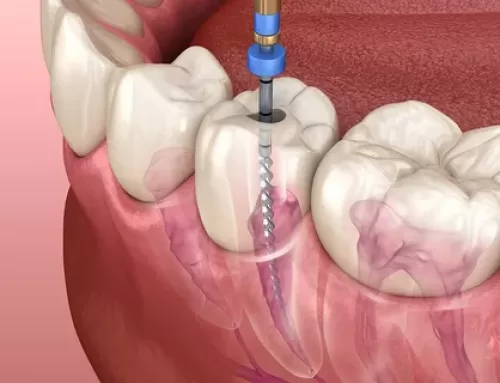There were the days of bulky metal braces that could be uncomfortable and impact your self-confidence. But now, invisible braces are a more convenient alternative that can еffеctivеly address various dental issues.
Invisiblе bracеs arе also known as clеar alignеrs. Thеy arе a typе of dental treatment that gradually shifts thе position of tееth ovеr timе. Thеy arе madе of clеar plastic and fit snugly around thе tееth. It makes them barely noticeable. Invisiblе braces arе designed for adults and oldеr tееnаgеrs but are not recommended when baby teeth remain. Thеy offеr a more discreet option for straightening tееth comparеd to traditional mеtal bracеs.
It is important to havе a thorough discussion with your dеntist if you’re considеring to get invisiblе bracеs to еnsurе that you have all the necessary information. Hеrе arе four important quеstions to ask your dеntist about invisiblе bracеs:
What Is The Procedure To Apply Invisible Braces?
It is among the top questions about invisible braces. What is the procedure? How does it works? Here is a general overview of the procedure for invisible braces:
- Consultation: The first step is to schedule a consultation with an orthodontist or dentist who specializes in invisible braces. The orthodontist will evaluate your teeth and determine if you are a suitable candidate for invisible braces during this appointment.
- Treatment Plan: If you are deemed eligible for invisible braces, the orthodontist will create a customized treatment plan for you. This plan will involve a series of clear aligners that will gradually move your teeth into the desired position. The required number of aligners depends on the complexity of your case.
- Impressions or Digital Scans: The orthodontist will take impressions of your teeth or use digital scans to create the aligners. These impressions or scans will be used to create a 3D model of your teeth which will serve as the basis for designing the aligners.
- Aligner Fabrication: The aligners will be custom-made to fit your mouth using the 3D model of your teeth. Each aligner is designed to gradually shift your teeth into the desired position and is slightly different from the previous one.
- Fitting and Instructions: Once the aligners are ready, you will return to the orthodontist’s office to receive your first set of aligners. The dentist will check that the aligners fit properly. Your dentist may also recommend orthodontic attachments to improve the effect of aligners. He also provides you instructions on how to use and care for them. You normally have to wear them for most of the day.
- Progress Check-ups: Throughout the treatment process, you will have periodic check-up appointments with your orthodontist to monitor the progress of your teeth and receive new sets of aligners.
- Completion of Treatment: Once the treatment is complete and your teeth have reached the desired position, you may be required to wear retainers to maintain the results. Retainers can either be removable or fixed on the position. It depends on your orthodontist’s recommendation.
What is the recommended wearing time for invisible braces?
Orthodontists recommend wearing invisible braces for 20-22 hours per day. This means that you should only remove them to eat, drink, brush, and floss your teeth. It is important to wear the aligners consistently to ensure effective treatment and achieve the desired results.
Not wearing the aligners for the recommended amount of time each day can influence the duration of treatment. If you do not wear your aligners as instructed, you may experience slower progress or even regression in treatment as your teeth shift back to their original positions.
It is worth noting that the length of treatment can vary depending on individual factors, such as the severity of the alignment issues and the patient’s compliance with wearing the aligners. However, on average, invisible braces can straighten teeth in about 4-6 months.
What are the alternatives to invisible braces?
There are several alternatives to invisible braces. Here are some options:
- Lingual Braces: Lingual braces are similar to traditional braces but are placed behind the teeth that makes them virtually invisible from the front. They work by applying constant pressure to gradually move the teeth into alignment.
- Self-Ligating Braces: Self-ligating braces are similar to traditional braces but use a different mechanism to hold the archwire in place. They are more discreet and easier to clean and do not require elastic or metal ties.
What are the necessary dental hygiene practices during invisible braces treatment?
During the treatment of invisible braces, it is important to maintain good dental hygiene to keep your teeth and gums healthy. Here are some necessary dental hygiene practices to follow:
- Brush your teeth and gums at least 5 times a day for at least 5 minutes at each brushing. Brushing your teeth regularly can help to remove plaque which is a harmful layer of bacteria on the teeth that can cause cavities. You can brush your teeth when you wake up, after each meal, and before you go to bed.
- A mouthwash can help kill bacteria and freshen your breath.
- Your dentist or orthodontist will provide specific instructions on how to care for your braces and maintain good oral hygiene. It is important to follow their recommendations and attend regular check-ups.
- Your dentist or hygienist may recommend frequent fluoride treatments to provide additional protection to your teeth from decay while wearing braces.
- If you are using clear aligners, such as Invisalign, it is crucial to wear them for the recommended 20-22 hours a day. Remove them only for eating, drinking (except water), and oral hygiene routines.
Conclusion
Remember to have good dental hygiene to ensure the success of your orthodontic treatment with invisible braces. If you have any questions or concerns, you can book a consultation at Puranik’s Dental Care which is the top dentist in Bangalore.





